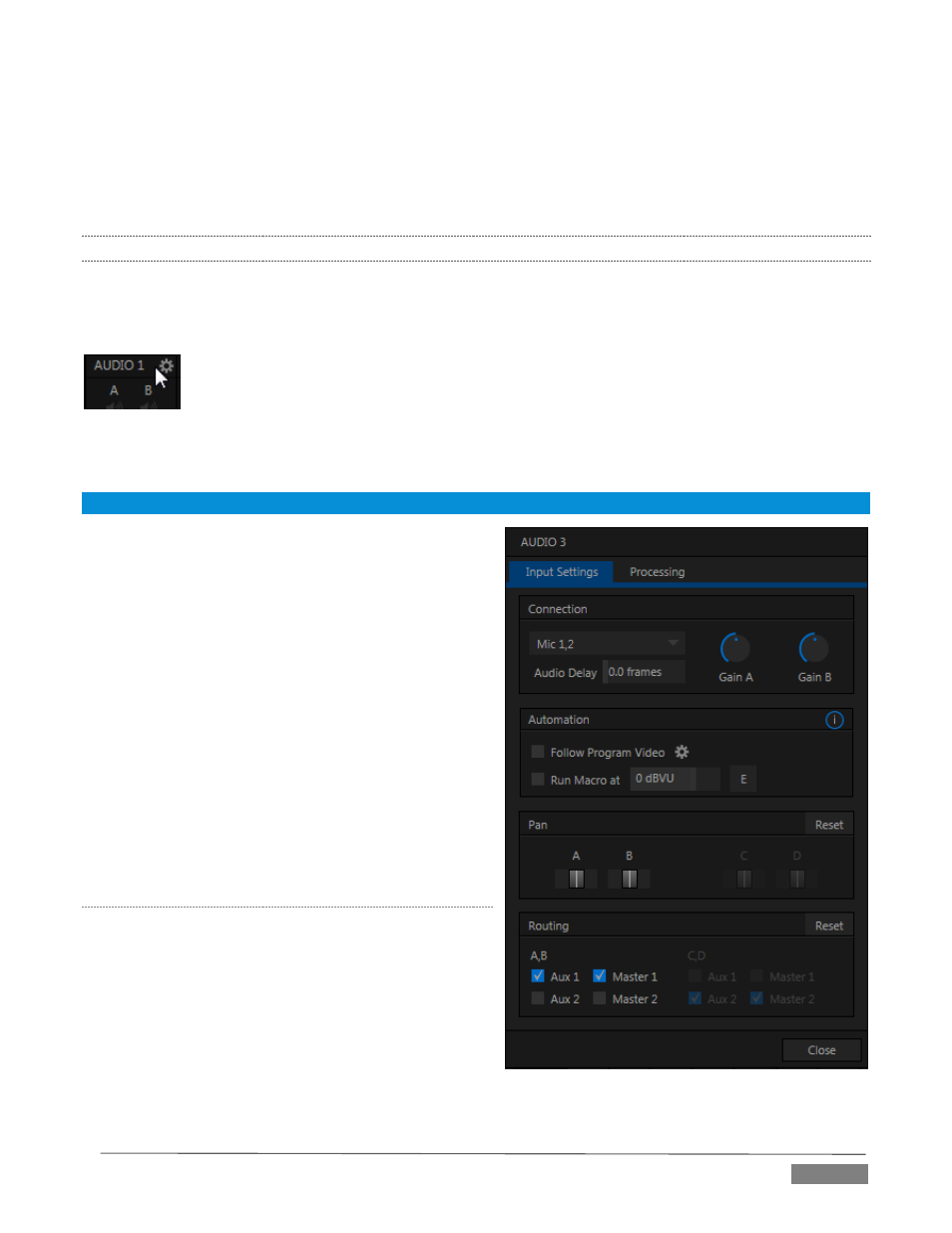1 connection type – NewTek TriCaster Advanced Edition User Guide User Manual
Page 167

Page | 155
You may choose to think of these audio sources as being associated with the same-numbered video inputs in
the nearby rows on the rear connector panel. This linkage is not strictly enforced, however.
At times you may well prefer to treat various audio sources as independent of the nominally associated video
input. The Follow (audio follows video) feature plays an important role in this context – see Section 15.7.2.
15.4.1
CONNECTION TYPE
Individual sub-panel panels for external sources govern a group of audio connections including variously
(depending on TriCaster model) of two XLR inputs, an AES/EBU (AES3) BNC connector, and an SDI Embedded
digital audio source.
Naturally, only one connection type can be active for a given audio input group at any
moment. To access the Connection menu, move the cursor into the label of an input, and click
the Configure (gear) button that appears just at right. The advanced Audio Configuration panel
will be shown.
The drop-down Connection menu at the top of this pane allows selection of one of the following options:
Note: For TriCaster 410 and TriCaster Mini, only the first two inputs support analog audio.
Mic (or Mic 1, 2) – low impedance microphones
and other common professional audio sources
Mic 1, 2 + Phantom (power) – microphones
(typically
condenser
mics)
requiring
supplementary DC power; not supported by
TriCaster Mini.
Line – generally consumer audio sources such as
CD players, VCRs, etc.
AES/EBU – digital audio (8-input models only)
SDI Embedded or HDMI – digital audio embedded
with digital video transmitted via a Serial Digital
Interface (SDI) or HDMI connection.
G
AIN
A/B
For Mic selections only, a Gain knob is sown at right for
each input channel.
This provides additional trim for Mic type inputs,
allowing you to bring input levels into a suitable
operating range.
FIGURE 191
FIGURE 192
